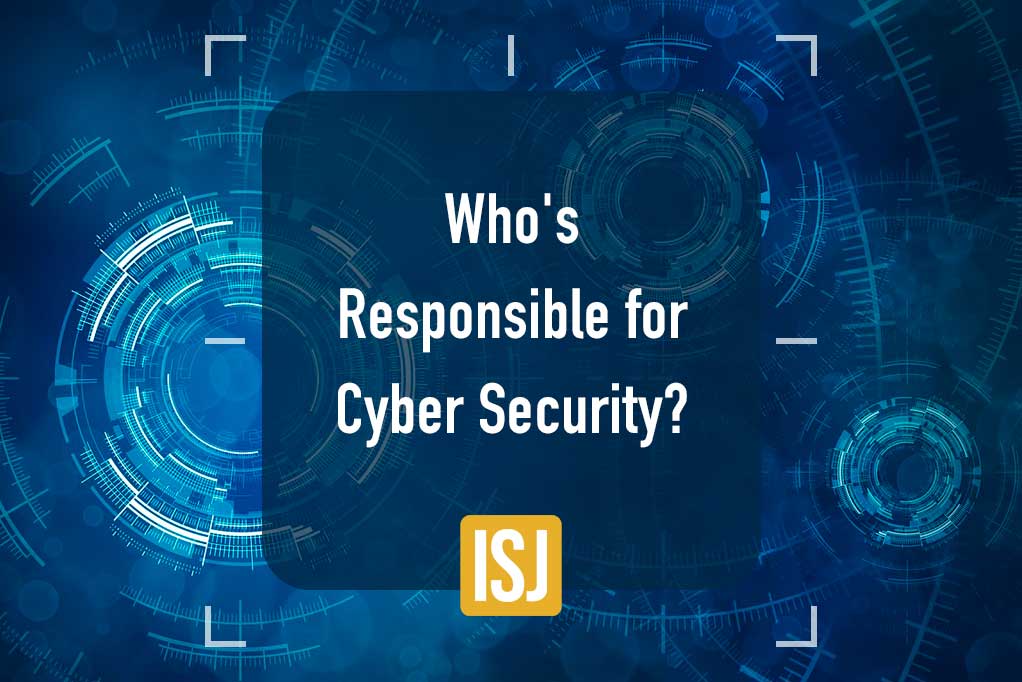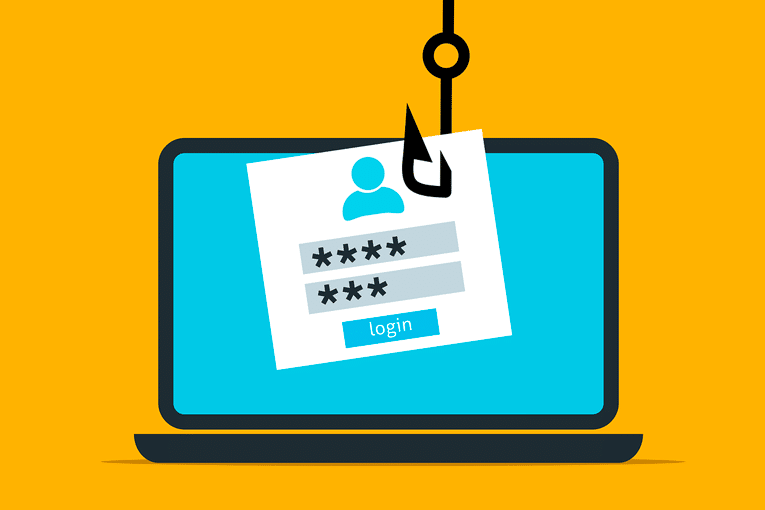Who is Responsible for Cyber Security?


Simon Burge
Share this content
In our increasingly interconnected world, where technology permeates every aspect of our lives, the need for robust cybersecurity has become more critical than ever before.
From personal information to sensitive corporate data, cyber threats can have far-reaching consequences, affecting individuals, organisations, and even entire nations.
But who bears the responsibility for safeguarding our digital landscape?
In this blog post, we will delve into the question of who is responsible for cyber security.
We will explore the stakeholders involved and highlight the shared effort required to ensure a safer and more secure online environment.
By understanding the roles and responsibilities of individuals, organisations, and governments in the realm of cybersecurity, we can collectively work towards mitigating risks and protecting our digital assets.
Article Chapters
Toggle- Cybersecurity & Its Growing Importance Explained
- Individual Responsibility in Cybersecurity
- Best Practices for Individuals to Protect Themselves
- Use Strong & Unique Passwords
- Enable Two-Factor Authentication (2FA)
- Be Cautious of Phishing Attempts
- Keep Software and Devices Updated
- Use Antivirus and Anti-Malware Software
- Secure Your Wi-Fi Network
- Be Mindful of Social Media Sharing
- Regularly Backup Your Data
- Be Selective with App Downloads
- Stay Informed
- Best Practices for Individuals to Protect Themselves
- Organisational Responsibility in Cybersecurity
- Government Responsibility in Cybersecurity
- Cyber Security Shared Responsibility & Collaboration
- Frequently Asked Questions
- Conclusion
Cybersecurity & Its Growing Importance Explained

Cybersecurity protects computer systems, networks, and data from unauthorised access, use, disclosure, disruption, modification, or destruction.
Cybersecurity has become increasingly important in today’s digital age due to several key factors.
Firstly, rapid technological advancements have increased connectivity and dependence on digital infrastructure.
With the proliferation of the Internet of Things (IoT) and the widespread use of cloud computing, more devices and systems are interconnected, creating a larger attack surface for cybercriminals.
This interconnectedness increases the potential entry points for cyber threats, making robust cybersecurity measures essential to safeguard sensitive information.
Secondly, the rise of sophisticated cyber threats poses significant risks.
Cybercriminals constantly evolve their techniques and leverage advanced technologies like artificial intelligence and machine learning to carry out sophisticated attacks.
These threats include ransomware, phishing, data breaches, and identity theft.
Such attacks can be devastating, leading to financial losses, reputational damage, and even compromising national security.
Thirdly, the increasing digitisation of critical infrastructure, including energy grids, transportation systems, and healthcare networks, has made them attractive targets for cyberattacks.
Disruptions to these systems can have severe consequences, such as power outages, transportation failures, or compromised patient care.
Protecting these infrastructures requires robust cybersecurity measures to ensure their reliability and integrity.
Furthermore, the growing amount of sensitive data generated and stored necessitates more robust cybersecurity.
Organisations collect and store vast amounts of personal and financial information, making them attractive targets for cybercriminals seeking to steal or exploit such data.
Strict cybersecurity protocols are essential to safeguard individuals privacy and maintain public trust.
Individual Responsibility in Cybersecurity
Individual responsibility in cybersecurity and personal cybersecurity awareness is crucial in today’s digital age.
Everyone has a role in protecting their personal information and contributing to a safer online environment.
By understanding common cyber threats, practising good security hygiene, and staying informed about the latest security practices, individuals can minimise the risk of falling victim to cyberattacks.
Responsible online behaviour, such as avoiding suspicious links and attachments, practising safe browsing habits, and being cautious about sharing personal information, can help prevent identity theft, financial fraud, and other cybercrimes.
Best Practices for Individuals to Protect Themselves
Below are a few ways in which individuals like you can protect themselves in the era of cybersecurity threats.
Use Strong & Unique Passwords
Create strong, complex passwords for all your online accounts.
Include uppercase and lowercase letters, numbers, and special characters.
Avoid using easily guessable information such as your name or birthdate.
It’s also essential to use a different password for each account to minimise the impact of a potential data breach.
Enable Two-Factor Authentication (2FA)
Two-factor authentication adds an extra layer of security by requiring users to provide additional verification, such as a code sent to their mobile device and their password.
Enable two-factor authentication whenever possible for your online accounts to prevent unauthorised access.
Be Cautious of Phishing Attempts

Be wary of emails, messages, or phone calls asking for personal information or urging you to click on suspicious links.
Phishing attacks often disguise themselves as legitimate communications from banks, service providers, or friends.
Verify the authenticity of the request through other means before sharing any sensitive information.
Keep Software and Devices Updated
Regularly update your operating system, software applications, and devices with the latest security patches.
These updates often include critical security fixes that protect against known vulnerabilities.
Use Antivirus and Anti-Malware Software
Install reputable antivirus and anti-malware software on your devices and keep them current.
These tools can help detect and prevent malicious software from infecting your devices.
Secure Your Wi-Fi Network
Protect your home Wi-Fi network with a strong and unique password.
Use Wi-Fi encryption protocols such as WPA2 or WPA3 to secure your wireless connection.
Be Mindful of Social Media Sharing
Be cautious about the information you share on social media platforms.
Avoid revealing sensitive personal details that cyber criminals could use for identity theft or social engineering attacks.
Regularly Backup Your Data
Back up important files and data storage regularly to an external hard drive, cloud storage, or other secure locations.
In case of a ransomware attack or device failure, having backups ensures you can restore your data without paying a ransom or losing valuable information.
Be Selective with App Downloads
Only download applications from trusted sources such as official app stores.
Review app permissions and user reviews to ensure the app is reputable and trustworthy.
Stay Informed
Keep updated with the latest cybersecurity news, trends, and best practices.
Follow reputable sources and organisations that provide insights and guidance on online security.
Organisational Responsibility in Cybersecurity
Organisational responsibility in cybersecurity refers to the obligations and actions that an organisation must undertake to protect its digital assets, information, and systems from cyber threats.
In today’s interconnected world, where data breaches and cyber attacks are becoming increasingly common, organisations are responsible for implementing robust cybersecurity measures to safeguard their operations, customers, employees, and stakeholders.
Importance of Cybersecurity Policies & Procedures
Cybersecurity policies and procedures are paramount for organisations in today’s digital landscape.
They provide a structured framework for protecting sensitive data, systems, and networks from cyber threats. Here’s why they are crucial:
First and foremost, cybersecurity policies and procedures help organisations identify and assess potential risks.
By conducting risk assessments, organisations can understand their vulnerabilities and establish controls to mitigate these risks.
Policies and procedures provide guidelines for implementing security measures such as access controls, encryption, and regular security updates.
Furthermore, cybersecurity policies ensure consistency and standardisation in security practices across the organisation.
They outline the roles and responsibilities of employees, establishing clear expectations for their involvement in maintaining a secure environment.
This consistency helps create a unified security posture, reducing the potential for gaps or inconsistencies in security practices.
Compliance with laws, regulations, and industry standards is another critical aspect.
Cybersecurity policies help organisations align with legal requirements, such as data protection regulations (e.g., GDPR) or industry-specific standards (e.g., PCI Security Standards Council Site).
Compliance protects organisations from legal and financial repercussions and helps build trust with customers and stakeholders.
In a security incident, having well-defined policies and procedures is vital.
They provide a roadmap for incident response, ensuring incidents are handled promptly and effectively.
Proper incident response can mitigate the damage caused by a breach and minimise disruption to operations.
Critical Features of Organisational Responsibility in Cybersecurity
Leadership & Governance
Organisational responsibility starts with effective leadership and governance.
Leaders should prioritise cybersecurity and establish a culture of security throughout the organisation.
They must allocate resources, set clear objectives, and define roles and responsibilities for cybersecurity management.
Risk Management
Organisations have a responsibility to identify and manage cybersecurity risks effectively.
This includes conducting regular risk assessments, identifying vulnerabilities, and implementing controls to mitigate those risks.
Organisations should have a risk management framework to evaluate, prioritise, and address cybersecurity risks.
Security Awareness & Training
Employees play a crucial role in maintaining cybersecurity.
Organisations should provide security awareness training to employees about common threats, best practices, and their roles and responsibilities in protecting sensitive information.
Regular training programs can help employees stay vigilant and make informed decisions regarding cybersecurity.
Secure Infrastructure
Organisations are responsible for implementing and maintaining secure technological infrastructure.
This involves firewalls, intrusion detection systems, encryption, and access control systems to protect networks, methods, and data.
Regular security assessments and testing should be conducted to identify and address vulnerabilities.
Incident Response & Recovery
Organisations must have a well-defined incident response plan to handle cybersecurity incidents effectively.
This includes processes for detecting, containing, and mitigating the impact of incidents, as well as communicating with stakeholders and regulatory authorities.
Additionally, organisations should have a robust data backup and recovery strategy to ensure business continuity in case of an incident.
Compliance with Laws & Regulations
Organisations must adhere to applicable laws, regulations, and industry standards related to cybersecurity.
This may include data protection regulations, privacy laws, and sector-specific compliance requirements.
Compliance helps protect the organisation’s reputation, ensures customer data privacy, and reduces the risk of legal and financial consequences.
Collaboration & Information Sharing
Organisations should actively participate in information-sharing and collaboration initiatives within their industry.
Sharing threat intelligence and best practices can help organisations stay updated on emerging threats and effective cybersecurity measures.
Continuous Improvement
Cybersecurity is an ever-evolving field, and organisations must continuously improve their security practices.
This includes staying abreast of the latest threats, technologies, and industry trends and implementing necessary updates and upgrades to enhance cybersecurity defences.
Government Responsibility in Cybersecurity
Government responsibility in cybersecurity refers to the role and obligations of governmental entities in ensuring the security and resilience of the nation’s digital infrastructure, information systems, and data.
Given the increasing frequency and sophistication of cyber threats, governments play a crucial role in protecting their countries’ critical assets and citizens from cyber attacks.
Here are some key ways in which governments are involved in cybersecurity:
Legislation & Regulation
Governments enact laws and regulations to establish cybersecurity standards, promote data protection, and combat cybercrime.
These laws define legal frameworks, establish penalties for cyber offences, and mandate security measures for organisations handling sensitive data.
National Cybersecurity Strategies
Governments develop national cybersecurity strategies to outline their approach to protecting critical infrastructure, mitigating cyber threats, and fostering a secure digital environment.
These strategies often involve coordination between government agencies, private sector entities, and international partners.
Incident Response & Law Enforcement
Governments maintain dedicated cybersecurity agencies or units responsible for responding to cyber incidents, investigating cybercrimes, and enforcing cybersecurity laws.
These agencies collaborate with international partners to address cross-border cyber threats and engage in information sharing.
Public-Private Partnerships
Governments engage with the private sector, academia, and civil society through partnerships to collectively address cybersecurity challenges.
Such collaborations promote information sharing, research and development, and the implementation of best practices to enhance cybersecurity resilience.
International Cooperation
Cybersecurity is a global issue, and governments participate in international forums, treaties, and agreements to promote cooperation and coordination on cybersecurity matters.
These efforts aim to establish norms of responsible state behaviour in cyberspace, combat cybercrime across borders, and facilitate mutual assistance during cyber incidents.
Awareness & Education
Governments are vital in raising public awareness about cybersecurity risks and promoting best practices for individuals, businesses, and organisations.
They invest in educational programs, campaigns, and initiatives to enhance digital literacy and foster a cyber-secure culture.
Protection of Critical Infrastructure
Governments are responsible for safeguarding critical infrastructure sectors, such as energy, transportation, finance, and healthcare, from cyber threats.
They work closely with industry stakeholders to identify vulnerabilities, establish security standards, and develop strategies to protect these essential systems.
Cyber Security Shared Responsibility & Collaboration
Indeed, cyber security is a shared responsibility that requires collaboration among various stakeholders.
No single entity can address all the challenges posed by cyber threats alone.
Here are some critical aspects of shared responsibility and collaboration in cybersecurity:
Government & Private Sector Collaboration
Governments and private sector organisations must work together to enhance cybersecurity.
This collaboration involves sharing threat intelligence, best practices, and resources.
Governments can provide regulatory frameworks and guidance, while the private sector can contribute technical expertise, innovation, and industry-specific insights.
Public-Private Partnerships
Establishing formal partnerships between government entities and private sector organisations is essential for addressing cyber threats effectively.
These partnerships facilitate information sharing, joint exercises, research and development, and coordinated incident response.
By combining their strengths, public and private entities can create a more robust and resilient cybersecurity ecosystem.
International Cooperation
Cyber threats often transcend national borders, making international cooperation crucial.
Governments collaborate with counterparts in other countries to combat cybercrime, share threat information, and establish norms for responsible behaviour in cyberspace.
International organisations and forums, such as the United Nations, Interpol, and regional alliances, play a vital role in fostering collaboration and information exchange.
Information Sharing
Sharing information about emerging threats, vulnerabilities, and attack techniques is crucial for early detection and effective response.
Government agencies, industry organisations, and security vendors should encourage and facilitate the sharing of threat intelligence while ensuring the privacy and security of sensitive data.
Cybersecurity Awareness & Education
Raising awareness and educating individuals, organisations, and the public about cybersecurity risks and best practices is a shared responsibility.
Governments, educational institutions, industry associations, and non-profit organisations collaborate to develop educational programs, campaigns, and resources that promote digital literacy, safe online behaviour, and proactive security measures.
Cross-Sector Collaboration
Cybersecurity collaboration should extend beyond the government and private sector partnership.
Critical infrastructure operators, academia, research institutions, and civil society organisations also play important roles.
Collaborative efforts involving all these sectors help identify vulnerabilities, develop resilient systems, and collectively respond to cyber threats.
Standardisation & Certification
Establishing cybersecurity standards and certification programs encourages organisations to adopt best practices and demonstrate their commitment to security.
Governments can work with industry bodies to develop these standards and certifications,
ensuring a common baseline of security measures across sectors.
Frequently Asked Questions
Is everyone responsible for cyber security?
Yes, everyone has a responsibility for cybersecurity. In an increasingly digital world, individuals, organisations, and governments all have a role in protecting their digital assets and contributing to secure cyberspace.
Individuals should practice good cyber hygiene, such as using strong passwords, being cautious of phishing attempts, and keeping software up to date.
Organisations must implement robust security measures to safeguard their networks and sensitive data.
Governments must enact and enforce cybersecurity laws, promote awareness, and collaborate with other stakeholders.
With cyber threats affecting all aspects of society, collective responsibility is essential for ensuring a safer digital environment.
Who manages cybersecurity in a company?
Cybersecurity in a company is typically managed by a dedicated team or department responsible for overseeing the organisation’s security measures.
This team may include a Chief Information Security Officer (CISO) or a cybersecurity manager who coordinates and implements security policies, risk assessments, incident response plans, and employee awareness programs.
Who is responsible for cyber security in the UK?
In the United Kingdom, cybersecurity responsibilities are shared among various entities.
The National Cyber Security Centre (NCSC), part of the Government Communications Headquarters (GCHQ), plays a crucial role in setting national cybersecurity strategy and providing guidance.
Additionally, individual organisations, both public and private, have responsibilities for implementing cybersecurity measures within their domains.
Conclusion
In conclusion, cybersecurity is a shared responsibility beyond any single entity.
While governments, organisations, and individuals have distinct roles, collaboration and cooperation are essential for effectively combating cyber threats.
Governments set regulations, provide guidance, and facilitate information sharing.
Organisations implement robust security measures and promote a culture of cybersecurity awareness.
Individuals practice good cyber hygiene and stay vigilant.

